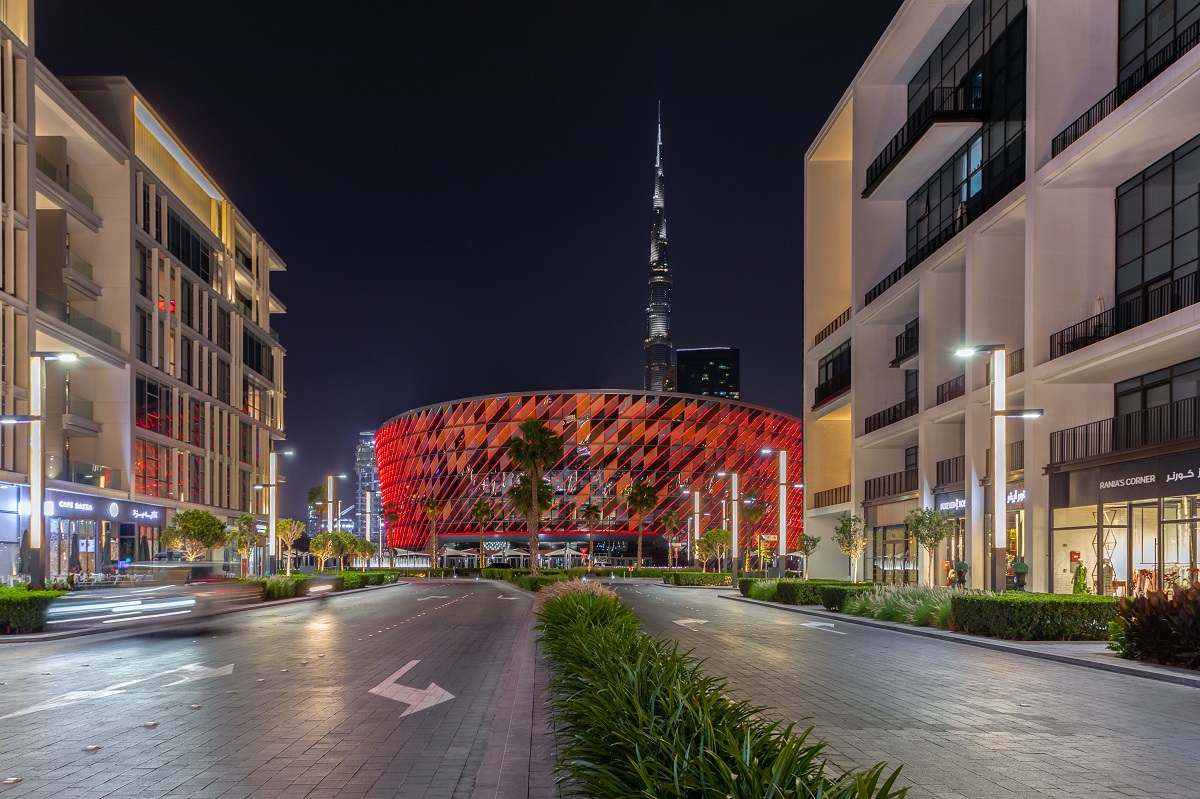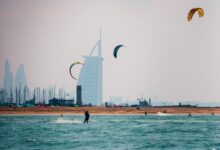
Dubai is known for its incredible vision and creative architectural feats, so it’s no surprise that the city is home to some amazing buildings and structures. Whether you’re a fan of awe-inspiring design, or just looking for a fantastic backdrop for your holiday snaps, these Dubai landmarks are all worth a visit.
TRADITIONAL ARCHITECTURE
Dubai has showcased innovation in architecture for centuries now. If you venture to the neighbourhoods of Old Dubai, you’ll be able to spot numerous buildings that evoke a picture of the city’s humble beginnings as a fishing village.
Where you can see these:
Al Fahidi Historical Neighbourhood: Witness a slice of traditional life in Old Dubai when you visit this district located along the Dubai Creek.
Gain a greater appreciation of Dubai’s culture and customs at the Sheikh Mohammed Centre for Cultural Understanding (SMCCU), located in a beautifully restored wind tower house. Sign up for a traditional Emirati breakfast, lunch, or dinner and take a seat on Bedouin-style carpets and pillows and enjoy a selection of traditional dishes while your local host answers questions about life in the emirate.
Stay at XVA Art Hotel, a restored courtyard house that meshes contemporary art, culture and traditional hospitality – together resulting in a creative space for poets, artists and visitors alike.
Dubai Museum is housed in the Al Fahidi Fort, the oldest existing building in the city, and features galleries that recreate historic local houses, mosques, souks, date farms, desert and marine life.
Al Shindagha District: At the mouth of the creek, you will see a number of older buildings in the Al Shindagha district – notably the Sheikh Saeed Al Maktoum House, official residence of Sheikh Saeed Al Maktoum, who ruled Dubai from 1912 to 1958, and is grandfather to the current Ruler of Dubai, His Highness Sheikh Mohammed Bin Rashid Al Maktoum.
Hatta: Straddling the border of Oman and Dubai, Hatta Heritage Village is not only a cultural haven but also a fantastic free day out. Hatta Heritage Village offers unique insights into traditional mountain life in the UAE, dating back 3,000 years.
TRADITION-INSPIRED MODERN ARCHITECTURE
Dubai continues to blend its rich heritage into its architecture today, with key cultural motifs notable in numerous buildings around the city.
Dubai Opera: Located in Downtown Dubai, the city’s first multi-format performing arts theatre easily catches your eye with its iconic shape – that of a dhow, a traditional sailing vessel. The building’s exquisite design was created by Janus Rostock and his team at Atkins, and has the exceptional ability to transform into three modes; from a theatre into a concert hall, and into a ‘flat floor’ mode becoming a banquet or event hall.
Burj Al Arab: The iconic sail-shaped silhouette of the world’s most luxurious hotel has made it a beacon of modern Dubai. Built on a triangular man-made island reclaimed from the sea, the hotel and its billowing sail-like structure rise 321 metres above the sea, offering panoramic views of the Arabian Gulf. Literally translating to ‘The Arabian Tower’, it was built over a five-year period: two to create the island and three to build the hotel. Architect Tom Wright of Atkins took on the challenge of creating this ground-breaking superstructure which announced Dubai’s magnificent vision of the future when it opened in 1999.
Palm Jumeirah: Palm Jumeriah is a man-made island formed in the shape of a palm tree. The world’s largest man-made island has forever transformed the map of Dubai. Comprising of a two-kilometre-long trunk, a crown made up of 17 fronds and a surrounding crescent, Palm Jumeirah is home to some of Dubai’s most luxurious resorts, including Atlantis, The Palm Dubai and Jumeirah Zabeel Saray. It spans five square kilometres, adding 78 kilometres to Dubai’s coastline.
- Other examples of Arabian-inspired architecture include:
Jumeirah Mosque: Drawing inspiration from medieval Fatimid tradition, this mosque has been built entirely from white stone, with towering twin minarets framing a large central dome. It’s remarkable, distinctive architecture has led to the mosque becoming one of Dubai’s most prized landmarks – and is also pictured on the AED500 note.
Bab Al Shams Desert Resort & Spa: Located in the desert, this resort was designed to resemble a fortified rural Arab village in the desert built in and around an oasis. Inside the walls, shaded courtyards, walkways and water features provide cool shelter and maintain a unique ambience and atmosphere. Godwin Austen Johnson and Chartered Architects worked together with landscape architects – Desert Leisure Dubai to design Bab Al Shams.
Madinat Jumeirah: A wide, sprawling development with three boutique hotels, summer houses, restaurants and shops across more than 40 hectares of land. The buildings in Old Dubai were the inspiration for the development, resulting in the creation of an Arabian Citadel, complete with a man-made river that you can cross via traditional abras.
Al Seef District: Al Seef celebrates Dubai Creek’s beginnings as a site for pearl diving. Hugging 1.8 kilometres of the creek’s shoreline, the 2.5 million square feet development features two sections – a heritage area with old architecture, which blends into a second space featuring more contemporary structures.
MODERN ARCHITECTURE
Dubai boasts a plethora of high towers and innovative structures, making it sometimes easy to overlook truly unique works of architecture. Below are some that deserve a look:
Etihad Museum: The 2.5 hectare Etihad Museum tells the story of the founding of the United Arab Emirates. Designed by Canadian architects Moriyama and Teshima, the unique curved white roof of the museum was inspired by the shape of the UAE constitution. It’s also adorned with seven columns, which symbolize the pens used to sign the agreement.
The Opus: A masterpiece by the late Dame Zaha Hadid, the Opus is called ‘The Building that Never Sleeps’. Immediately noticeable in Dubai’s Business Bay district, the building was crafted in the form of a cube with two separate towers that merge together – from the bottom at the atrium level, as well as from a bridge 71m above the ground. The void this creates gives the illusion of being ‘carved’ out, creating iconic curves.
(Opening soon) Coca-Cola Arena: Also known as Dubai Arena, this is Dubai’s largest indoor arena for music, sports and entertainment events that is set to open in June 2019. The arena is situated in City Walk and boasts 360-degree indoor bowl seating, and a capacity of 17,000
Follow us on Telegram, Twitter, Facebook or subscribe to our weekly newsletter to ensure you don’t miss out on any future updates.



